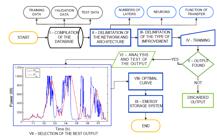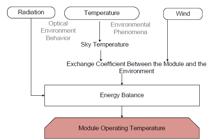HIGHLIGHTS
ANN with 10 neurons shows better performance when compared to 20 and 100.
ANN with more than two hidden layers does not demonstrate better accuracy.
The self-loading of the ANN exceeds the limits, requiring external mechanisms.
The lack of continuity in the data influences the behavior of the ANN training.
Abstract
Recent technological advances and increased participation of energy systems based on photovoltaic solar energy place this renewable energy source in a prominent position in the current scenario. With the increase in the share of solar photovoltaic systems, the impact of power fluctuations in these sources has worsened, which can affect the quality of electrical energy and the reliability of the electrical power system. Therefore, with the use of energy storage together with control algorithms based on artificial intelligence, it is possible to control and perform power smoothing. In this context, the study presents a technical feasibility study on the use of artificial neural network (ANN) to perform the power smoothing of the photovoltaic system connected to the network. Being studied the performance of a real photovoltaic system operating in conjunction with an ideal energy storage for comparative analysis of the performance of the artificial neural network when the numbers of neurons and layers are modified for different real operating conditions considered as temperature variation, humidity, irradiation, pressure and wind speed, which are considered to be ANN input data. The results obtained point to the feasibility of using ANN, with acceptable precision, for power smoothing. According to the analyzes carried out, it is clear that ANN's with few neurons, the smoothing profile tends to be more accurate when compared to larger amounts of neurons. In the current state of the study, it was not possible to determine a relationship between the variations in the number of neurons with the most accurate results, it is important to note that the development of the curve pointed by the neural network can be influenced by the database. It should be noted that, when ANN exceeds or does not reach the optimal smoothing curve, the storage system compensates for the lack or excess of power, and there is a need for other mechanisms to optimize power smoothing.
Keywords:
Photovoltaic system connected to the grid; Power smoothing and artificial neural network

 Thumbnail
Thumbnail
 Thumbnail
Thumbnail
 Thumbnail
Thumbnail
 Thumbnail
Thumbnail











